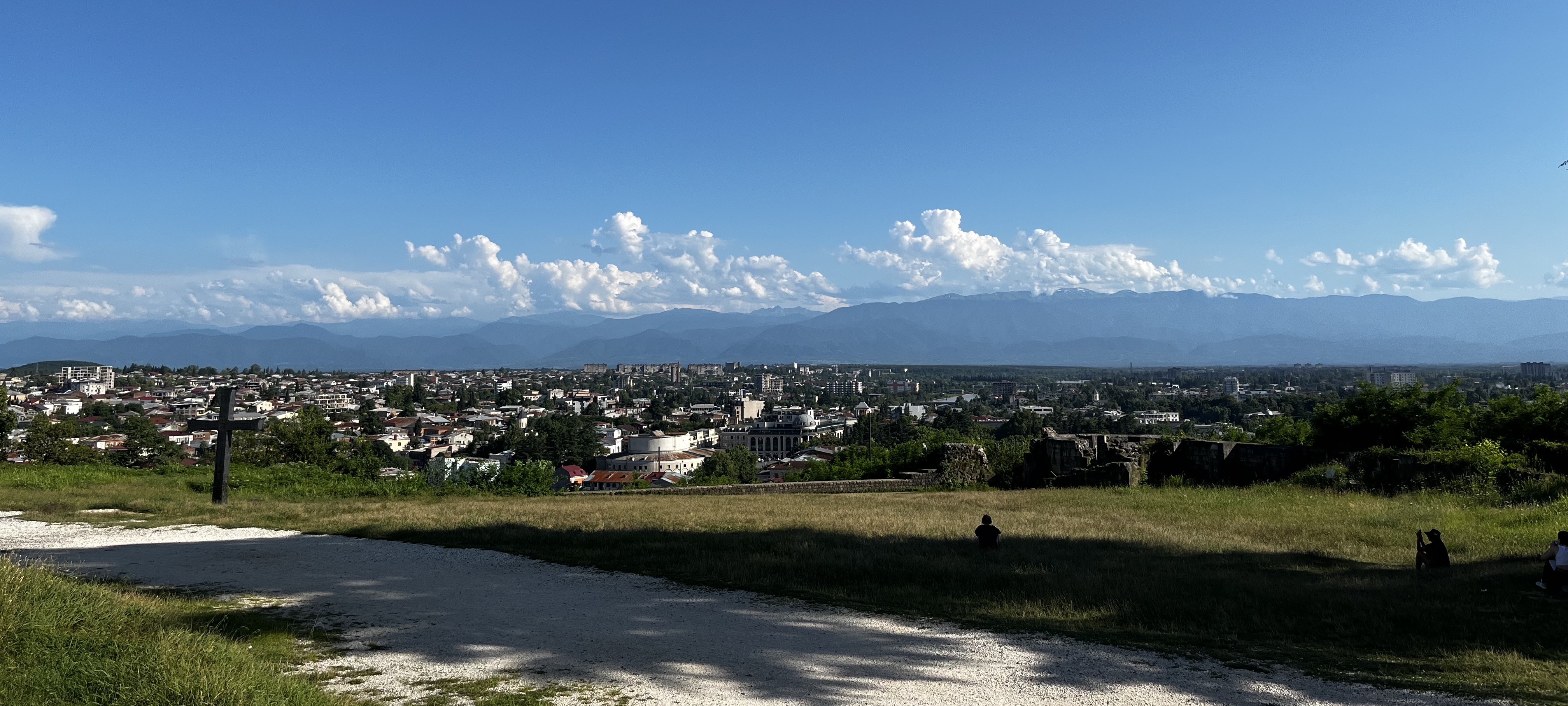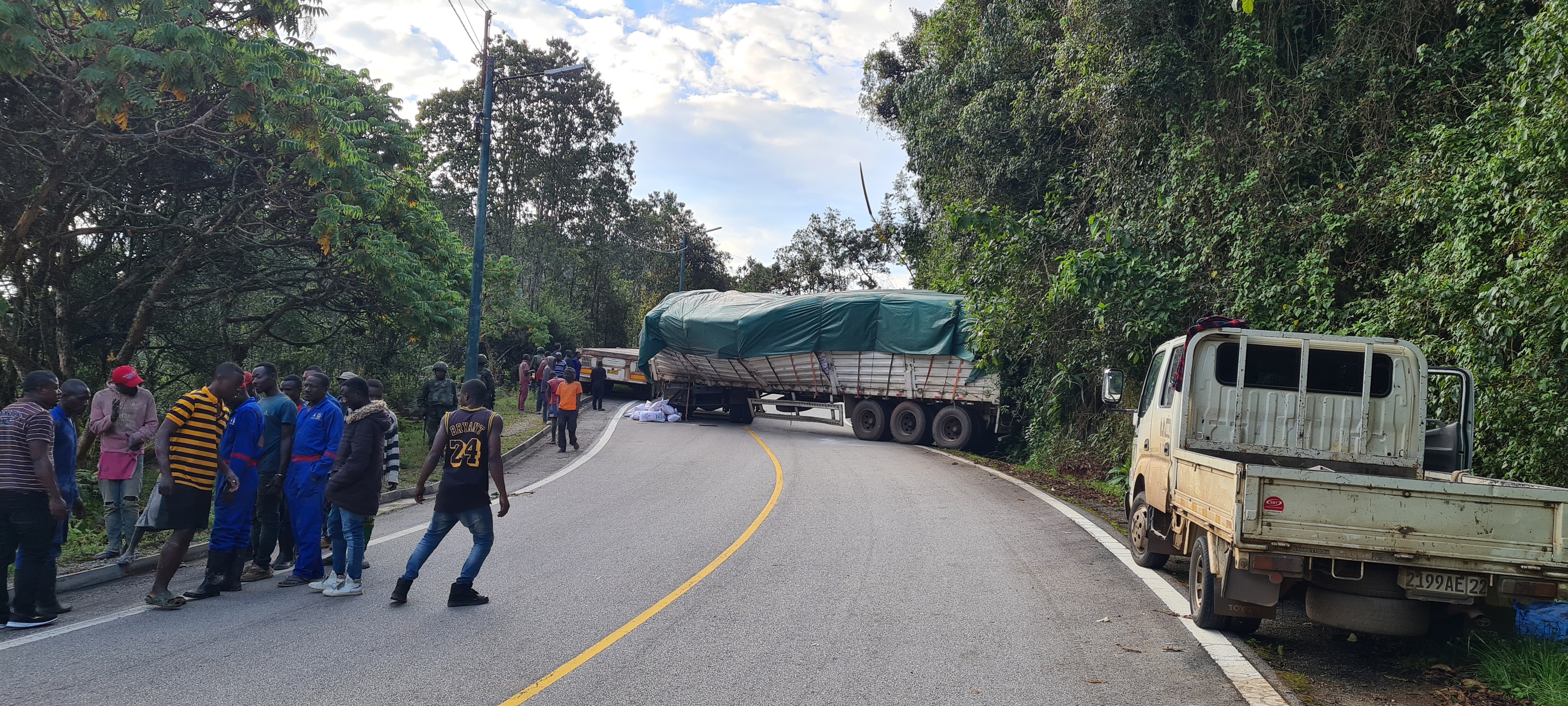Guest Blog
In the field with GEO Mountains: A Reflective Journey Across the Caucasus, Central Asian, East Africa, Himalayas, and Andes Mountains
During the GEO Mountains Regional Workshop Series (2023–2024), we were fortunate to be able to spend some time in the very mountain regions we have been working to support for the last four years under the Adaptation at Altitude Programme. In this post, we provide a few reflections on our experiences.
Affability and Avalanche Risk in Almaty
We embarked on our first trip, to Almaty, Kazakhstan, in April 2023. Following intensive but productive presentations and discussions at our workshop venue, all eagerly anticipated an afternoon trip to the nearby Tuyuksu Observatory. The observatory is located in the Ile-Alatau National Park, and is a one of five sites comprising the recently inaugurated Central Asia Mountain Observatories Network (CAMON).
Given the high avalanche risk following recent snowfall, the authorities unfortunately prohibited us from proceeding into the high mountains. We therefore had to content ourselves with a gentle stroll up the road, necks stretched at the steepness and beauty of the surrounding topography. Our hosts pointed out various monitoring instruments and infrastructure – in some cases still under construction – that seek to mitigate the downstream risk of debris flows. Still, travelling back into the city that afternoon, we couldn’t help but feel that the full capabilities of our vehicle had been somewhat underutilised…

Travelling in style in with the staff of the Central Asian Regional Glaciological Centre in Kazakhstan
Our subsequent gala dinner was lubricated in the customary fashion.
A Heatwave and Hospitality in Kutaisi
Our next engagement, the Caucasus Mountain Forum in July 2023, brought us to the ancient – and at that time of year also rather hot – city of Kutaisi, Georgia. Following a few days’ work, sustained by the country’s famous food, wine, and hospitality, many colleagues attended an organised field trip to Svaneti, in the north-west of the country. Alas, other commitments required us to return to Switzerland, causing us to miss that adventure, although we understand an excellent time was had by all. We have already begun preparing eloquent toasts in anticipation of our next visit!

The Caucasus from afar
Ecosystems and “Excitement” in East Africa
October 2023 arrived, and with it the opportunity to spend more time in the mountains – firstly in Rwanda, following a workshop we hosted at the WCRP Open Science Conference. During this trip and subsequently in Nepal, more of the risks and challenges associated with living and travelling in mountain environments would reveal themselves.
Western regions of Rwanda were still recovering from devastating floods and landslides which had occurred in May. Furthermore, our route to Nyungwe Forest National Park – one of the few remaining areas of montane forest in the entire country – was littered with trucks which, being overburdened or poorly maintained, had overturned or otherwise lost power on the sinuous mountain roads. On one occasion, a collision was only narrowly averted.

A truck accident on the road to the national park.
Once in the park itself, we embarked on a circular hike, which took in several waterfalls and a number of majestic trees. During the hike, our guide imparted his considerable knowledge on various topics. Topics included the native flora and fauna, traditional community uses of forest resources, and issues regarding poaching, mining, and deforestation – which are thankfully now mostly in the past. He also discussed the park's ongoing efforts to conserve and enhance the ecosystem and protect its biodiversity, whilst simultaneously providing good livelihoods for local people through their employment as tour guides and in hospitality.
Our impromptu biodiversity and ecosystems field course was enriched by further by the expert contributions of MRI Science Leadership Council Member Prof. Rob Marchant, who also eagerly took on the role of official group photographer. Besides hiking, visiting chimpanzee groups and tackling a canopy walkway are the major attractions, and the number of tourists – who provide crucial income – is steadily growing.

An impressive waterfall in Nyungwe Forest National Park

The Kamiranzovu Swamp, the largest wetland of the national park, hosting many species of flowers, especially orchids.
Despite the optimism, the clear absence of mature trees in many areas and, most affectingly, the display in the visitor centre of the skull of the park’s very last elephant – which was killed by poachers as recently as 1999 – underscored humanity’s pervasive potential for environmental destruction.
Hiking and Seismic Upheaval in the Himalayas
It was then directly on to Kathmandu, Nepal, where we arrived in early November 2023 to spend several days hosting a workshop with our partners from ICIMOD. On 3 November, following an evening exploring Kathmandu’s hectic streets, we experienced some moderate seismic shaking in our hotel rooms. A Google search merely a few minutes later informed us that a moderate-sized earthquake had struck the west of the country (a nice example of technology being effectively applied to assist disaster response). We were saddened to learn later that the earthquake had claimed the lives of over 150 people in a remote community.
A short weekend hiking tour in the hills around Kathmandu was embarked upon, the highlight of which was undoubtably stumbling across the enchanting Prakriti Resort and Organic Farm, which made a very welcoming stop in an intense rainstorm after a long hike, and presented an inspiring concept of eco-tourism! Later, in Chisapani, we discovered the remains of buildings destroyed during the major earthquake of 2015, which affected the entire country, once again demonstrating the significant impact of these events on the landscape and communities.

Fields of Marigolds at sunrise from Prakriti Resort.
But that was merely a warm-up for Alex, who spent the next two weeks visiting the country. Before setting off to the mountains, she spent a few more days in Kathmandu, during one of the country's most important religious festivals: the Tihar. The crowded city suddenly comes to a halt and concerts take place every evening in the street, in parallel to religious celebrations within families.

Kathmandu and Swayambhunath on top of the hill, at sunset.
On the Mardi Himal hike, the beauty of the mountains was accentuated by the authenticity of the path, less crowded than other well-known treks. From steep paths through cultivated fields, to forest that stretches up to 3,000 m, the breathtaking viewpoints of Machapuchare (6,993 m) and Anapurna Dashkin (7,219 m) we reached. As we ascended, we gradually felt the effects of the altitude, experiencing a shortage of oxygen. It was amazing to observe the communities acclimatized to these conditions. The country has not only stunning scenery, but also a rich culture and architecture, which we were lucky to discover in some of the mountain villages less affected by earthquakes on the way back to Kathmandu.
 |
 |
Mardi Himal and Machapuchare, from above 4,500 m (left) and Anapurna Dakshin and Hiunchuli at sunrise (right).
And Finally, Amusement and Ablation in the Andes
Our series of visits culminated in February 2024, when we were honoured to be invited to join colleagues from EIA University on a weekend field visit to the Poleka Kasué mountain observatory in the central Colombian Andes. The observatory hosts a transect of monitoring stations which span an elevational gradient of some 3,000 m, the upper portions of which lie within Los Nevados National Park. Here, as in Rwanda and Nepal, we remarked upon how strictly controlled and regulated access to the national park is.
Thanks to the pragmatic placement of many of the 28 sensors within reach of the dirt access road, the fieldwork (downloading data from the loggers and replacing them as necessary) was not unduly onerous. Our hosts did however impress upon us how lucky we were, since several of their sensors are only accessible by multi-hour hikes!
A particular highlight of the trip was observing the sharp transitions between ecosystem zones as we climbed to above 4,500 m, learning about the fascinating plant–water–soil interactions that occur in the Páramo zone, and enjoying the beautiful – if apparently unseasonal – weather conditions.

Unique vegetation of the Páramo zone and remaining Santa Isabel Glacier.
Yet again a tinge of unease was felt by all. The Santa Isabel glacier is now on the verge of disappearance. When the time comes, which will surely be in the next years, despite the Páramo zone also being spatially limited, beautiful, and intriguing, there is real concern that the attractiveness of the park to tourists will be significantly diminished without its eponymous snow and ice. Some even are wondering whether the name of the national park, which can be translated into English as “the snow-capped mountains”, should be changed!
The group’s latest data show a clear acceleration of warming at higher elevations. As such, the warm and dry conditions prior to and during our visit associated with El Niño, which induced conspicuous declines in groundwater levels and wetland functioning, may portend the future.
Connected Reflections: Insights from the Regions
In closing, considering all the visits, a few points stood out to us in particular:
- The vast majority of people we met living and working in mountains settings displayed genuine passion and commitment to their regions
- The beauty and awe of mountain environments is ubiquitous, yet a wide range of hazards and risks lurk, and frequently manifest themselves
- In some regions, it appears that access to certain mountain areas, such as national parks, is becoming more restricted. For instance, new regulations that only permit access with a guide are entering force across much of Nepal. This is undoubtedly a well-intended measure designed to support local livelihoods and increase the engagement of local communities in environmental protection
- Mountain tourism more broadly thus has a key role to place in pathways towards more sustainable mountain development, and seems to be a high priority in many of the regions we visited
- Yet there are often inevitable, even inherent tensions between tourism activities (and associated livelihood provision) on the one hand, and ecosystem protection on the other, implying a need for extremely prudent, nuanced, and evidence-based operations and management strategies.
Finally, it cannot be overlooked that such a series of workshops inevitably comes with a hefty environmental footprint. As such, it is imperative that the various ideas and initiatives discussed and developed at the workshops, and in the field (where applicable), are followed through in order to bring about real positive impacts for mountain people and ecosystems under high and increasing pressures.
We are extremely grateful to all partners involved in organising the regional workshop series for welcoming us to their cities, countries, and mountains. We look forward to continued engagements and collaborative work during the second phase of Adaptation at Altitude!
Cover image: Alex and James with the team from EIA University at high elevation in Los Nevados National Park. All other images provided by James Thornton and Alex Massot.
By accepting you will be accessing a service provided by a third-party external to https://www.mountainresearchinitiative.org/








